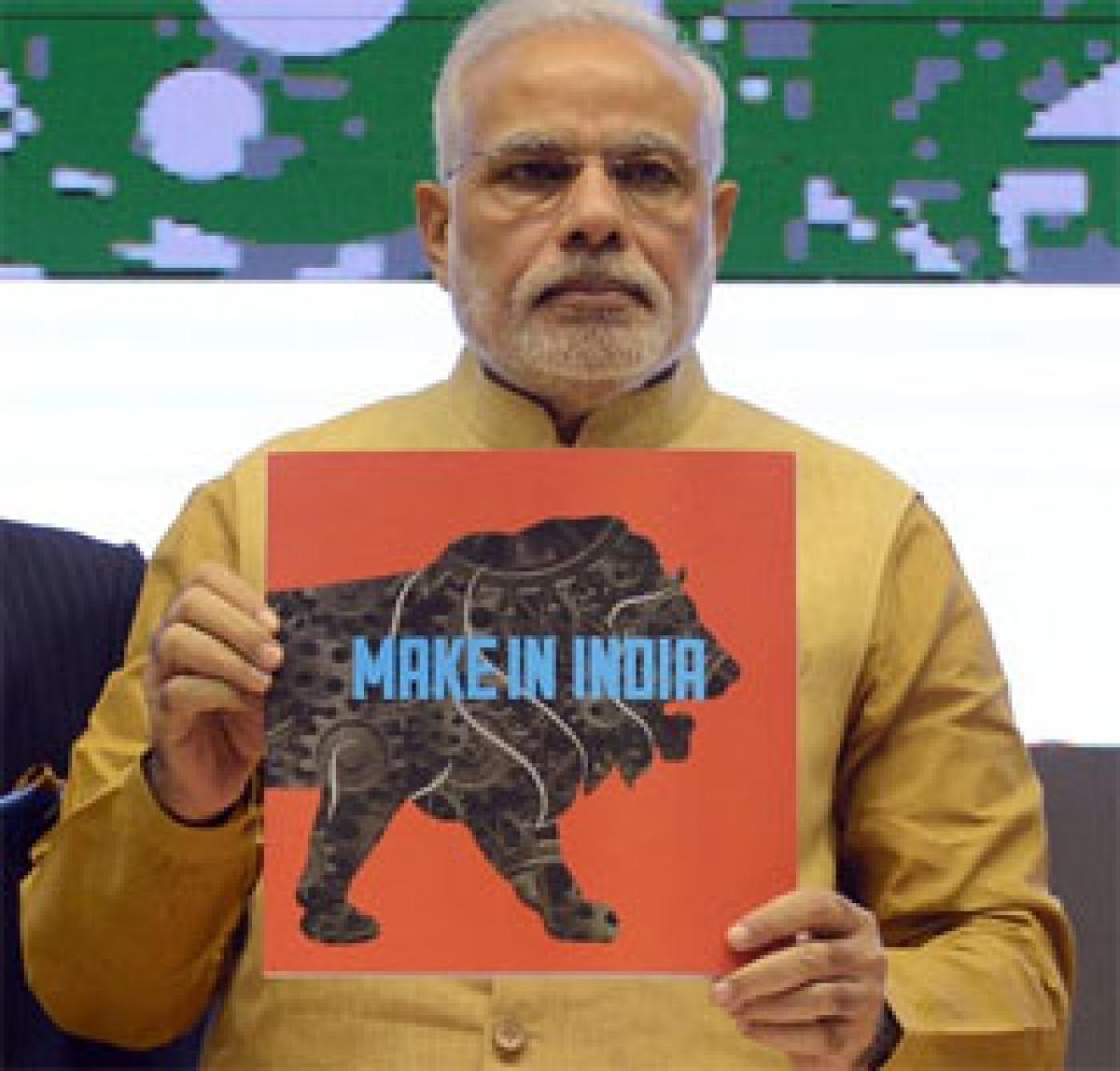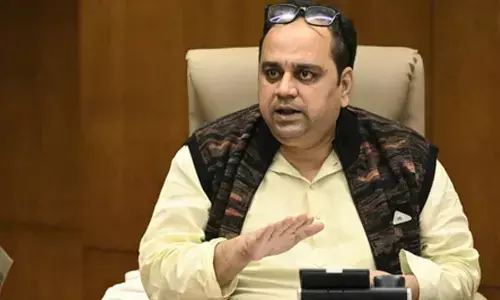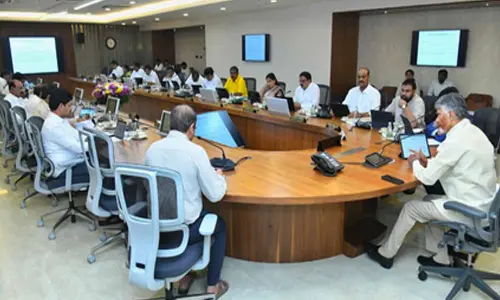Remake Make in India

The latest data reveals that the growth in manufacturing sector cools down to its slowest in 22 months in October this year. This data comes as a rude shock to Prime Minister Narendra Modi who is going hammer and tongs across the globe on his pet project of Make in India.
 The latest data reveals that the growth in manufacturing sector cools down to its slowest in 22 months in October this year. This data comes as a rude shock to Prime Minister Narendra Modi who is going hammer and tongs across the globe on his pet project of Make in India.
The latest data reveals that the growth in manufacturing sector cools down to its slowest in 22 months in October this year. This data comes as a rude shock to Prime Minister Narendra Modi who is going hammer and tongs across the globe on his pet project of Make in India.
Sops to industrialists to attract capital from within and abroad, relaxing rules and regulations to ensure doing business at ease, hard-selling India at global market place , etc., are some of Modi’s high pitch efforts to unveil his Make in India campaign . But, the supply side push seems to have not yielded much result as the sluggish growth in manufacturing sector is attributed to softening domestic demand.
The weak data in manufacturing sector comes at the backdrop of RBI cutting interest rates to a four-and-a-half-year low. The rate cut was presented as a panacea to kick-start the economy. But, despite low interest rates, the brick and mortar sector fell steeply.
This clearly indicates that supply side measures will not alone deliver. The better strategy to boost manufacturing sector would be triggering greater demand. This can only happen by putting incomes in the hands of the people rather than showering incentives on producers. Therefore, the Make in India should first make a paradigm shift. More substantive steps should replace Halla Bol.
Besides demand side management, many prerequisites need to be met. Reconstruct manufacturing by integrating India with global value chains. Producers of manufactured products must respond more rapidly to changing market needs and consumer tastes. The product life cycles are fast reducing. Proliferate product choices to meet the emerging demand. The demographic dividend in India makes this a greater imperative.
The industry should use the liberalised environment to engineer products quickly and at low cost to acquire a competitive advantage. Frugal innovations and frugal manufacturing should get the highest priority in the manufacturing strategy.
Inclusive innovations in manufacturing sector would not only trigger economic growth and employment but even contribute to social and human development. For instance, India would benefit more by manufacturing a low-cost bicycle or computer or tractor than a car. Green manufacturing should be at the focus to strike a balance between environment and development.
The manufacturing sector urgently requires raw material security and high quality man power. The information technology boom has driven the best brains away from manufacturing sector. Incentivise to reverse this trend. India should immediately give up export of primary materials and shift to export of value-added products.
The other initiative that needs focus to boost manufacturing can include improving physical infrastructure, impetus to micro, small and medium enterprises, networking them to create scale of economy, skilling India, reducing the time and cost of doing business, etc.
Manufacturing sector accounts for only 15 per cent of India’s GDP while it is 34 per cent in China and 40 per cent in Thailand. This is absolutely unacceptable for a populous country like India.
Woman injured in stabbing attack in Tokyo, suspect at large
Bengal cop booked for murder over mysterious death of woman home guard, SIT to probe case
Staffer recalls horror of 7-kg gold robbery by armed gang in Karnataka’s Hunsur
25-Year-Old Airline Cabin Crew Member Dies At Gurugram Party; Police Begin Investigation















